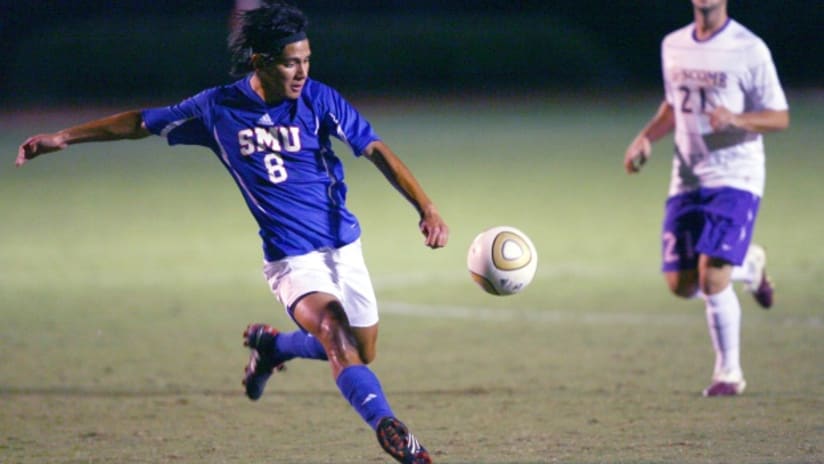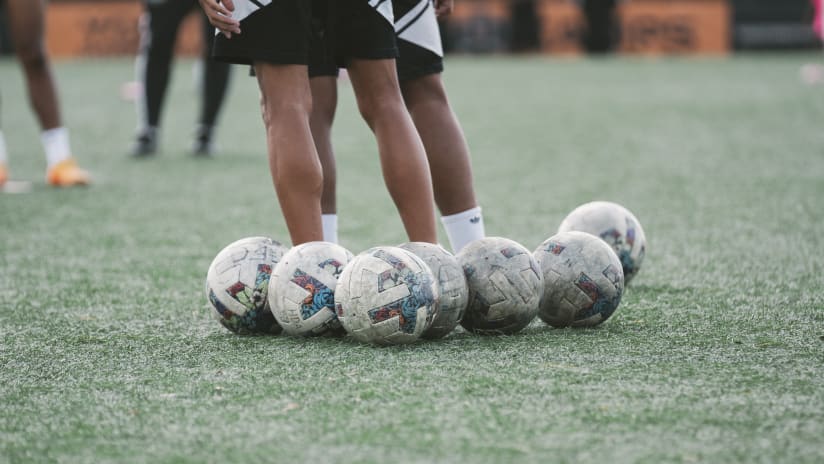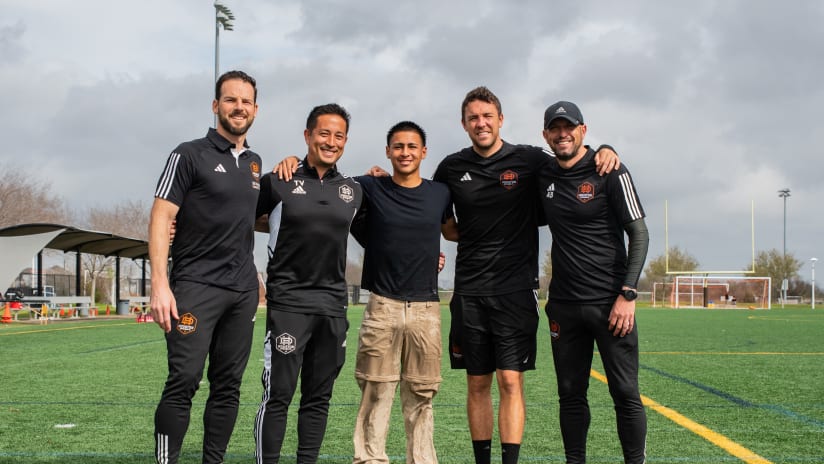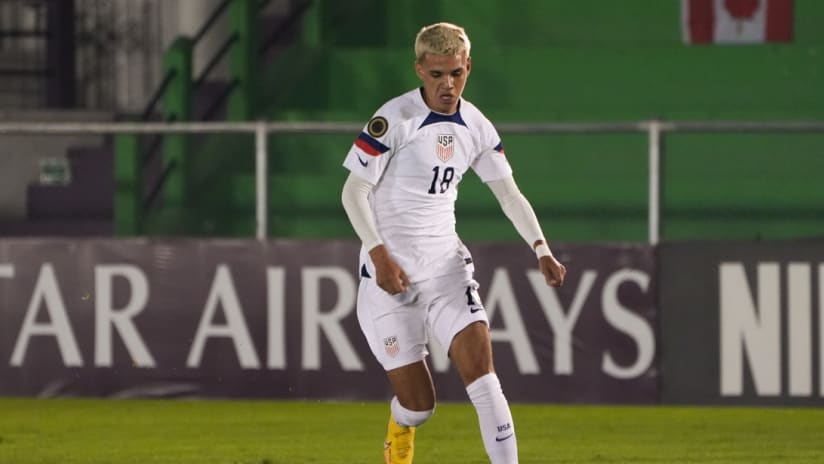Major League Soccer announced its home-grown player initiative in November 2006, allowing clubs exclusive rights to sign players they developed, provided the player was registered prior to enrolling at a four-year university or joining the U.S. U-17 national team.
Four years later, while the most visible products of this rule are teenagers signed prior to going to college, such as MLS Rookie of the Year Andy Najar, the first class of college seniors eligible to be signed outside of the draft is nearing decision day. With only some teams listing their players publicly, HoustonDynamo.com has tried to figure out how it’s all going to work.
As best as we can tell, the identification process for the MLS combine will continue as normal, but if a prospect is identified who is on a team’s home-grown player list, that club will be contacted and asked about its plans for the player. At that point, the club will likely have to make a contract offer to the player or allow him to go to the combine and enter the draft without any ties to the club. By our count, there are only 14 seniors eligible to sign directly with an MLS squad this offseason, representing only four different teams.
Of course, this is the first time any of these situations have happened, so we can expect a few kinks along the way. The process for underclassmen and potential Generation adidas signings, for example, is slightly unclear, and this is where a lot of the top prospects lie. Communication between MLS and its clubs will be paramount to avoid conflicting messages for talented juniors, sophomores, and freshmen.
With that in mind, here is a look at the American MLS teams (Toronto and Vancouver seem to be following their own, non-collegiate model) and their home-grown player programs, with specific player information courtesy of teams and/or universities. This study compares only total number of Division I players, but many teams retain the rights of players at Division II, Division III, and NAIA schools and have players in the junior-college ranks who could transfer to four-year schools.
Casting a wide net
(28-33 Division I players)
Chicago Fire – The vast majority of Chicago’s players are freshmen, but junior midfielder Brendan King (Notre Dame) is probably the best pro prospect. Talented sophomore Ian Christianson was recently named Big East Midfielder of the Year at Georgetown, while of the freshmen, Chris Prince (Wisconsin) and Bryan Ciesiulka (Marquette) caught our attention.
Columbus Crew – The Crew have strong representation in both the junior and sophomore classes, highlighted by Akron sophomore defender Chad Barson, who has started every game, and Wake Forest forward Andy Lubahn, who led the Demon Deacons with eight goals.
Los Angeles Galaxy – The club with the most Division I players, LA has most of its charges on the West Coast. Like several other clubs, the sophomore class is where they start to make a big impression, with Stanford midfielder Dersu Abolfathi, while forward Reed Williams and defender Joe Sofia both see regular time at UCLA as freshmen. Cal State Bakersfield forward Gyasi Zardes was recently named MPSF Newcomer of the Year.
New York Red Bulls – Probably the most complete Academy in MLS. Junior midfielder Matt Kassel (Maryland) has been touted as a professional prospect since training with the first team in high school; will he finally come out? New York also has starters at local programs St. John’s, Monmouth, and Seton Hall and a league-high six Division I seniors, including Iona midfielder Mario Rios, who was on the preseason Hermann Trophy watch list.
Real Salt Lake – The biggest program, numerically and geographically, thanks to its RSL Arizona and RSL Florida programs, Salt Lake has publicly expressed interest in UConn junior midfielder Tony Cascio but does not appear to have any other blue-chip prospects; the majority of its home-grown players are at the Division II or junior college level.
Somewhere in the
middle (11-18 Division I players)
D.C. United – Fresh off the success of Bill Hamid and Andy Najar, D.C. may not have any collegiate players ready to make the jump this offseason, but they do boast exciting sophomores in defender Ethan White at Maryland and midfielder Sean Murnane at Virginia.
Houston Dynamo – The Dynamo have one of the most prepared seniors in the country in SMU midfielder Josue Soto and also have talent in the ACC ranks in junior forward Alex Dixon, despite just one goal this year at North Carolina, and freshman defender Sebastien Ibeagha, starting at Duke.
Kansas City Wizards – The Wizards have five Division I seniors, second only to New York, with Butler midfielder Brett Heinz and Denver defender Michael Perry the most likely pro prospects. St. Louis sophomore midfielder Alex Sweetin is one of the better underclassmen.
A select few (Fewer
than 8 Division I players)
Chivas USA – More Chivas youth prospects have headed south to Mexican fútbol then to American universities, and none of Chivas’ collegiate players seem like favorites to make an MLS roster.
Colorado Rapids – Although the Rapids do not have a deep roster in college soccer, their players are contributors. Junior Ryan Kawulok is a starter at Portland, sophomores Alex Tarnoczi and Drew Beckie start at Denver, San Francisco goalkeeper Brendan Roslund is 6-foot-6, and freshman Robbie Derschang starts for No. 5 SMU.
FC Dallas – Dallas has already signed four players out of high school, which has left its college cupboard fairly bare. Sophomore defender London Woodberry sees time at Maryland to lead the charge. Bradlee Baladez scored the game-winner for South Carolina to eliminate Duke on Sunday.
New England Revolution – Akron sophomore midfielder Scott Caldwell is the leading candidate for the Revs, and he has started for the Zips all year.
Just getting started
(0 Division I players)
Philadelphia Union – Philadelphia started its Academy program this summer and should begin placing players in college soccer next year.
Portland Timbers - It is unclear if Portland will be able to retain the rights to players who may be or have been affiliated with its USL club.
San Jose Earthquakes – San Jose started its Academy program this summer and should begin placing players in college soccer next year.
Seattle Sounders – Seattle started its Academy program this summer and should begin placing players in college soccer next year.





